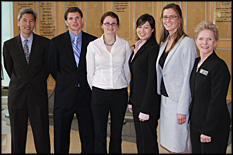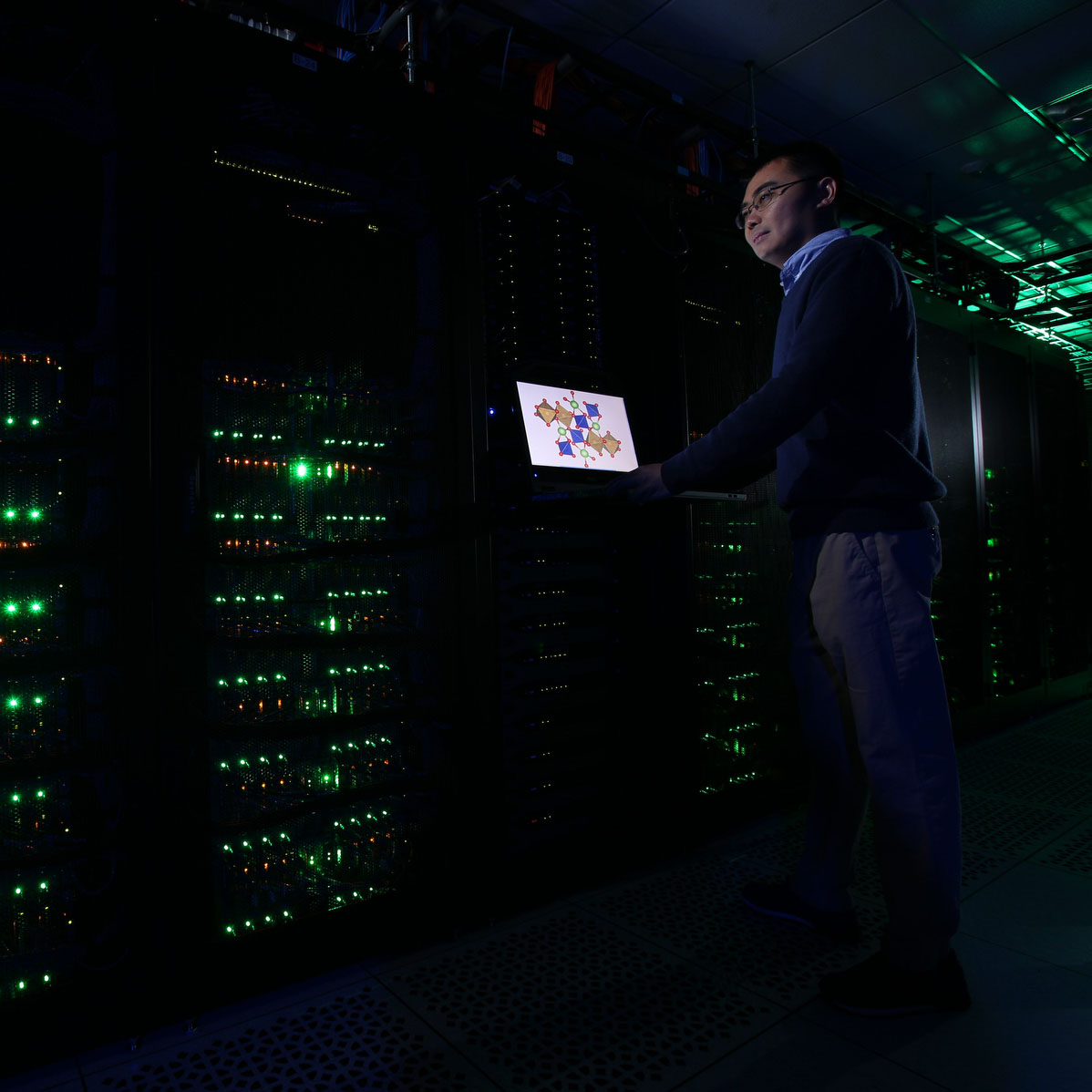News Story
UM $50K Business Plan Competition Winners Announced

First place winners overall Cerene Biomedics
The Maryland Technology Enterprise Institute (Mtech) today announces the winners of the 2008 University of Maryland $50K Business Plan Competition, an event that has served as a springboard for several local technology companies.
Eight finalist teams comprised of faculty, students and alumni unveiled new technology companies to a group of distinguished judges from the region’s venture capital and economic development communities. First and second place winners were selected in each of three categories, as well as first and second place overall.
“This year's competition continues the event's strong tradition since 2001 of supporting innovative, commercializeable technologies created by members of the university community,” says Dean Chang, Mtech’s director of ventures and education and director of the Technology Advancement Program. “All of these teams displayed the same key traits in their plans and their presentations that past winners also displayed on their way to becoming vibrant, multi-million dollar businesses in this region. They all are attacking a significant source of pain with a combination of technology, diligence, and passion that may ultimately have a positive impact on society in areas such as medicine, infrastructure security, food safety, traffic management, and energy.”
Winners this year, broken down by division, included:
Alumni Division
-
First Place, $15,000; First Overall: Cerene Biomedics is developing an implantable medical device that will prevent epileptic seizures by delivering targeted micro-scale thermoelectric cooling to the neocortex of the brain. Cerene’s patent-pending prototype device could overcome previous hurdles in brain cooling, providing first-line therapy for 300,000 epileptic patients in the U.S. each year with a seizure focus on the neocortex. Cerene’s team includes John Stroncek, alumnus, department of mechanical engineering, 2005; Heidi Koschwanez; Christina Li; Carolyn Nohejl; and Vivek Sasikumar.
-
Second Place, $6,000; Second Overall: Resensys, Inc. develops remote, wireless, distributed sensors that persistently monitor the structural health of bridges, massive commercial and residential buildings, and civil infrastructure. Resensys’ sensors are easy to install, ultra-energy-efficient, and environmentally friendly. Resensys’ team includes Dr. Mehdi Kalantari, alumnus, department of electrical and computer engineering, 2005.
Faculty and Graduate Student Division
-
First Place, $15,000: Intelligent Packaging Systems manufactures flexible polymer coatings that change color upon the detection of food-borne bacteria such as E. Coli, Salmonella, or Listeria. IPS’s coatings can be incorporated into any existing food packaging, providing both producers and consumers of a wide variety of foods, such as beef, poultry, pork, fruits, vegetables, juices and dairy products, with a reliable method of identifying contaminated products. IPS’s team includes Daniel Janiak, graduate student, department of materials science and engineering; and Dr. Peter Kofinas, professor, Fischell Department of Bioengineering.
-
Second Place, $2,000: TRAFFAX Inc. designs, produces and licenses equipment and systems to measure the flow of vehicle traffic and pedestrians based on technology that detects and monitors electronic emissions from consumer electronic devices. The TRAFFAX technology overcomes disadvantages of existing systems in that it is accurate, inexpensive and protects individual privacy. TRAFFAX’s team includes Dr. Stanley E. Young, Center for Advanced Transportation Technology, associate research faculty, department of civil and environmental engineering; Philip J. Tarnoff, director, Center for Advanced Transportation Technology, department of civil and environmental engineering; and Nicholas Ganig, student, department of electrical and computer engineering.
Undergraduate Student Division
-
First Place, $10,000: LDTech is developing the Liquid Desiccant Waterfall (LDW), a visually appealing, low-energy dehumidifier that pulls moisture from the interior of a house and releases it outside in the atmosphere. The technology provides comfort, cost savings and energy savings, as well as a reduction in mold, mildew, bacteria, and dust mites, in a beautiful and dramatic symbol of green technology. LDTech’s team includes co-inventor mechanical engineering student Tyler Sines, and the following students from the Hillman Entrepreneurs Program: Anthony Ajayi, accounting/information systems; Randolph Ballard, electrical engineering; Elliot Dixon, finance; Robert Garrison, accounting/finance; Shirley Haden, American studies; Andy Han, information systems; Willie T. Montgomery Jr., American studies; Stanley Ohaka, computer science; and Trevor Young, economics/public policy.
-
Second Place, $2,000: SymViva Technologies is developing advanced transdermal insulin patch technologies to replace the use of hypodermic needles in treating diabetes. Using research on ultradeformable carriers like Transfersomes®, SymViva Technologies plans to commercialize vesicular delivery technology in an insulin delivery patch that is safe, easy to use, and inexpensive to produce. SymViva's team, which is also a Gemstone Program team, includes Keran Lu, chemical and biomolecular engineering; David Baumgarten, biochemistry; Wendy Bian, marketing; Nicole Chait, cell biology and genetics; David Chen, physiology and neurobiology; Linh Do, cell biology and genetics; James Johnston finance; Kevin Quinn, physiology and neurobiology; Ben Tylka, ecology and evolution; Vanessa Vichayakul, marketing and international business; Coral Zhou, biochemistry; and Prof. Nam Sun Wang, chemical and biomolecular engineering.
Judges for the event were Henry Ahn, program manager of technology funding programs for the Maryland Technology Development Corporation (TEDCO); Warren Citrin, co-founder and board member of Gloto Corp.; Ray Dizon, managing director of the Maryland Venture Fund; Wei-Wu He, general partner and co-founder of Emerging Technology Partners LLC; Mark Kass, member in the corporate practice of Mintz, Levin, Cohn, Ferris, Glovsky and Popeo; and Karl Renner, a principal for Fish & Richardson P.C.
Sponsors for the event included: Fish & Richardson P.C.; the Maryland Department of Business and Economic Development; the Maryland Technology Development Corporation; and Mintz, Levin, Cohn, Ferris, Glovsky and Popeo.
The UM $50K Business Plan Competition promotes the commercialization of innovative ideas and University-created technologies by offering faculty, students, and alumni prizes for the best new venture plans. The competition emphasizes learning by offering one-to-one coaching for finalists, as well as the experience of presenting ideas to an experienced panel of judges.
In the seven years since its inception, the competition has served as a launch point for the commercial success of previous winners. Squarespace Inc. is now a top Web publishing and blogging platform on the Internet, with multi-million dollars in revenue. Another recent recipient, MacroPhage, developed a business plan centered on distributed denial of services detection algorithm. This innovation was licensed to RioRey, Inc., a leading provider of protection against distributed denial of service attacks.
AnthroTronix Inc. saw $2 million in revenue in 2007, spun off a subsidiary AT KidSystems Inc. in 2005, and has received grants and contracts from the National Science Foundation, Department of Education and National Institutes of Health for R&D in the educational and rehabilitation arenas. The company has contracted with customers such as the U.S. Army, U.S. Navy, U.S. Marines, DARPA, Lockheed Martin, and NASA. Castle Duncan received $2 million in funding, went public through a joint venture with Real Logic Inc., and is purchasing a 146,000-square-foot factory to produce its vehicles.
Alertus Technologies cites millions in revenue, having sold thousands of its Alertus Notifications Beacons. The company's customers include universities, school districts, military bases and international projects.
Chesapeake PERL realized revenues of $2.8 million in 2007 and has grown to 13 employees. The company has had several grants from NIH, as well as small business innovation research grants from both the U.S. Army and the U.S. Department of Energy. Chesapeake PERL is a supplied to a major agricultural chemical company. The company has expressed and received proteins in excess of 50, including some that no one else has done.
Published May 9, 2008









